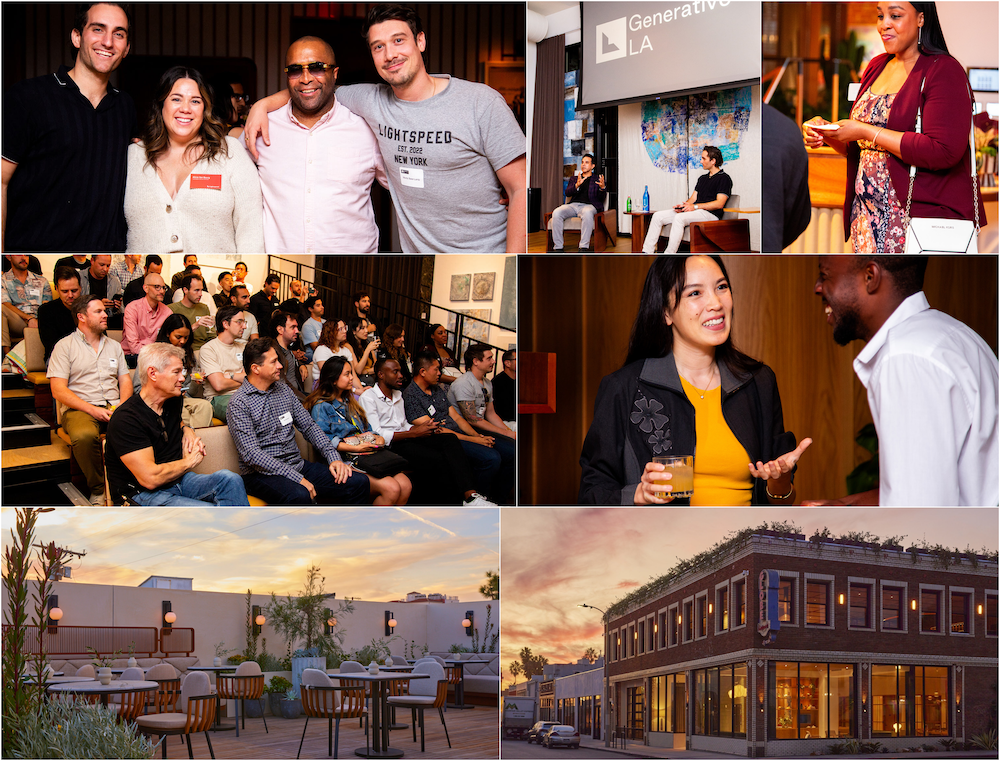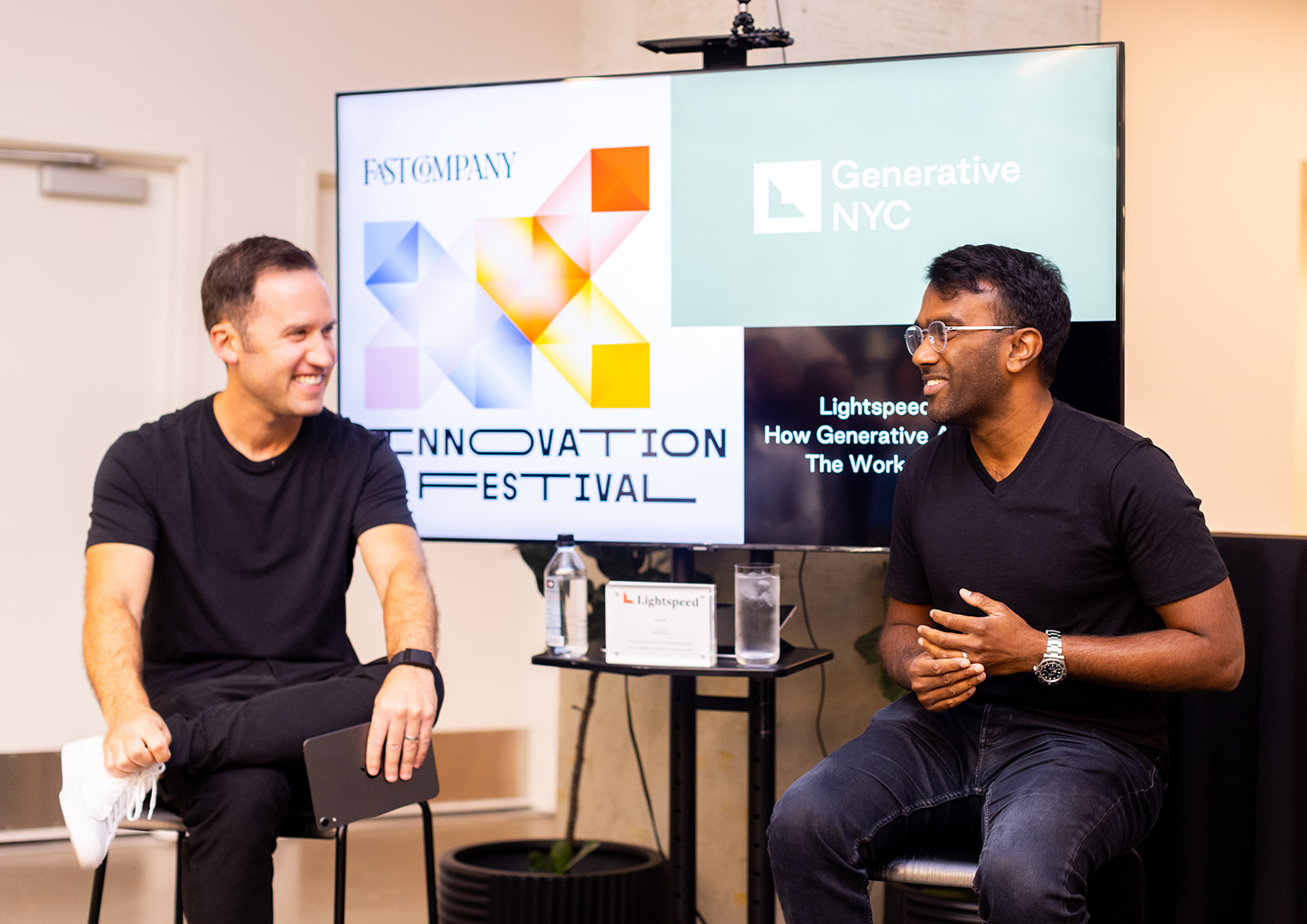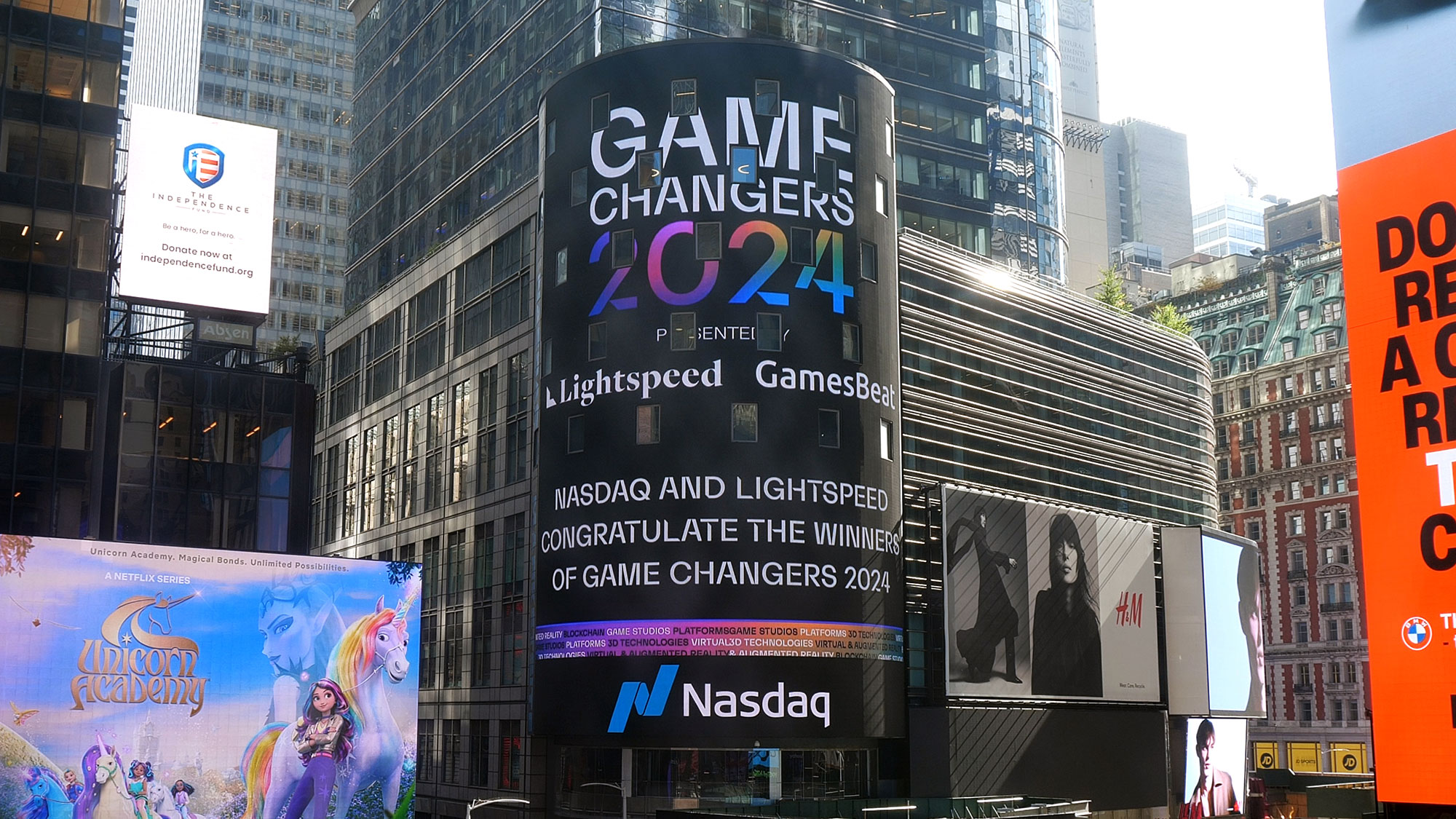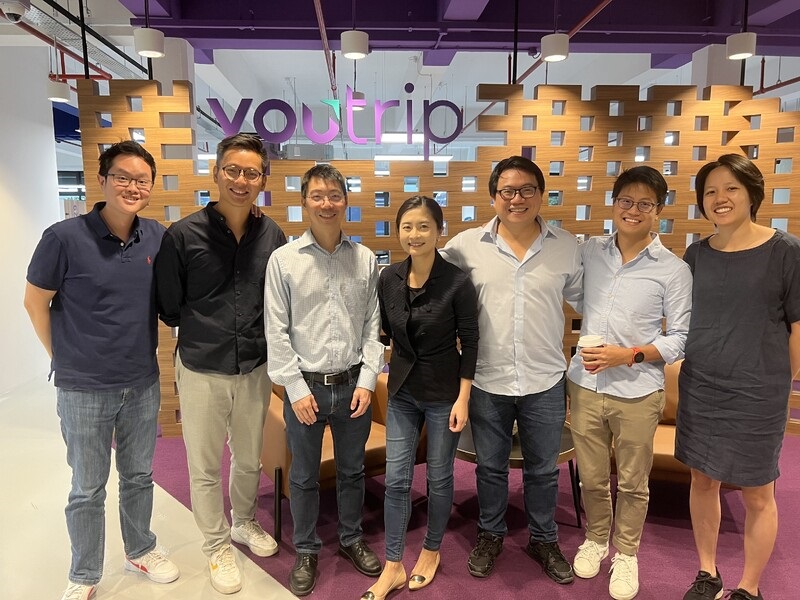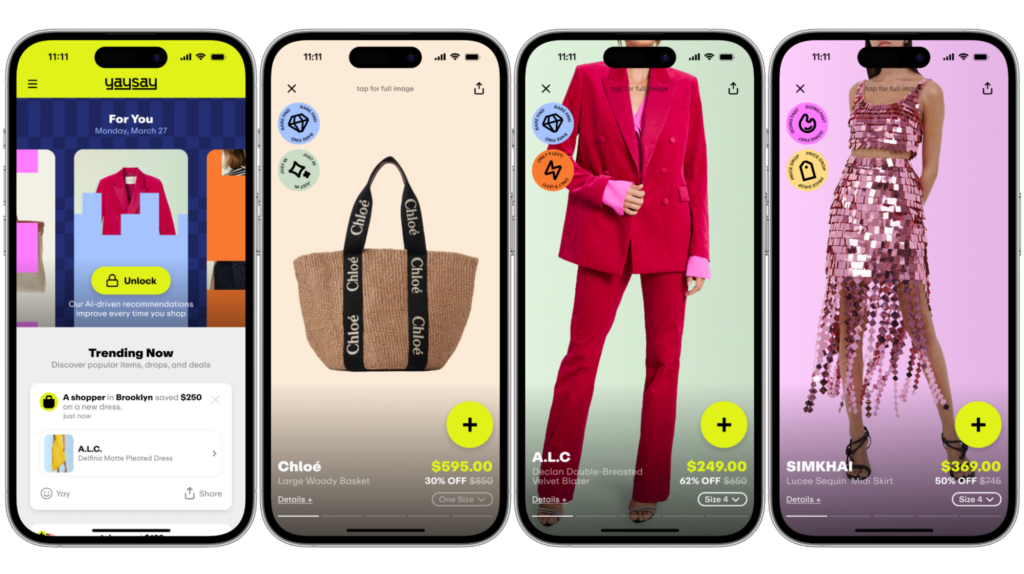- Buzzworthy 🐝
- Posts
- 10 Predictions for 2024
10 Predictions for 2024
From AI & AR to crypto & digital health, bracing for another big year in tech!
Welcome to the 4th edition of Buzzworthy!
2023 certainly was a wild ride. Between the global banking fallout in March to the OpenAI saga a little over a month ago, we’ve faced global conflict, unprecedented climate anomalies, and record inflation in various parts of the world. Capital invested also continued to decline as Carta recently pegged 2023 investment into US startups at ~$57B, a precipitous drop from $123B last year and $227B in 2021.
At the same time, it’s not all doom & gloom — we’ve been blessed with a year of incredible technology advances across healthcare, science, and AI to name just a few. And, consumer sentiment continues to trend positive as the US recently set a record for Black Friday Cyber Monday sales ahead of the holiday season.
In today’s edition we’ll cover a plethora of Legendary (👀) new deal announcements, takeaways from several of Lightspeed’s AI initiatives this fall, and the feature story on some of our top predictions for the tech & VC landscape looking ahead to 2024.
Let’s jump in!

I (Nicole) have been writing a reflections and predictions piece every year since 2016 (most recent ones from 2020, 2021, and 2022 linked here) but I have to admit I don’t have one to reflect on this year as I didn’t publish for 2023 — though I do have a good excuse as I was having my now 1-year-old baby girl! This year I’m back and better than ever since Faraz & I are partnering up to bring you our top takes for 2024…
We all win the “lottery of time” as consumer AI shifts towards utility ⏳
AR comes back into focus as the race for AI wearables heats up 😎
AI adoption intensifies concerns around consumer data privacy 🔐
AI ushers in a new standard for education 📚
“Crypto summer” arrives with another pop 🪙
Renewable energy picks up steam 🔋
Healthcare as we know it is completely transformed by AI 🩺
AI usage booms for the Baby Boomer generation 🧓
Early healthcare diagnosis goes mainstream 🩻
A new US contender enters the fast fashion arena 🛍️
1. We all win the “lottery of time” as consumer AI shifts towards utility ⏳
For the average American, the 24-hour day can be split into three relatively even buckets — 8 hours of sleep, 8 hours of work, and 8 hours of living.
For the 8 hours of work, we’ve already seen AI meaningfully boost productivity across tasks (e.g. Granola for meeting summaries, Tome for presentations, beehiiv for writing newsletters) and functions (e.g. Eightfold for HR, Typeface for marketing, Thoughtspot for data). This efficiency boost gives us the same (or higher) output at a fraction of the time — thank you GenAI!
For the 8 hours of living, however, we are still extremely underoptimized. This “living” bucket encompasses everything from socializing with others to planning vacations to running errands to taking care of personal health needs and so much more. Many of the consumer AI applications to-date have largely been focused on entertainment use cases, which follows trends observed in previous platforms shifts until there is a critical mass of consumer adoption. In 2024, we will see the emergence of more purpose-built AI applications focused increasingly on utility use cases. AI has the power to democratize access to previously time- and cost-intensive services — an AI personal assistant (that costs $10 a month rather than $10,000), an AI trip planner, an AI personal shopper, an AI financial manager, the list goes on.
What is the real impact of this? It makes us all winners of the lottery — the lottery of time — giving us much more freedom & flexibility to pursue new areas of interest, passion, and creativity. The question then becomes, what will YOU do with all this newfound time?
2. AR comes back into focus as the race for AI wearables heats up 😎
As we discussed in the July edition of Buzzworthy, Apple’s Vision Pro unveiling was a milestone moment XR enthusiasts have long awaited. Surveyed Buzzworthy readers, however, expressed a more measured sentiment that we tend to align with — due to a variety of reasons (including production limitations, ~$3.5k price point, and nascency of application ecosystem) the 2024 unit sales for Vision Pro will likely come in well below similarly hyped Apple hardware launches.

That’s not to say, however, that 2024 will be a flop for AR — quite the contrary. While the Vision Pro may not be the AR industry boon it’s long been hyped to be, the AI wearable wave will be.
We’ve seen AI personal assistant wearables emerge in recent month across a variety of form factors, from pendants to pins. And the “why now” makes sense, with the emergence of multimodal AI that can process visual, textual, and audio inputs passively. The next form factor we expect to gain commercial traction in 2024 will be AR x AI glasses.

Meta recently demonstrated AI assistant functionality built on top of it’s Ray-Ban partner smart glasses. Snap announced adding ChatGPT to its AR developer toolkit, for use not only on the core Snapchat application but also through adjacent offerings including Spectacles and Camera Kit. Amazon has been working on development of similar multimodal AI devices leveraging Titan, which times up interestingly with the launch of the updated Echo Frames smart glasses this past fall. Google, which famously flopped with the Google Glass debacle a decade ago, has continued to develop multimodal software with Gemini that could presumably power optical hardware devices. And Microsoft, with arguably the most advanced suite of AI capabilities (in large part due to its deep integration/investment/board involvement with OpenAI) has begun to preview AI copilot functionality on HoloLens devices for commercial use cases.
The question remains whether value in AR x AI will accrue to these scaled incumbents, or whether we'll see a startup emerge in 2024 capturing these same tailwinds from a technology and consumer adoption perspective.
3. AI adoption intensifies concerns around consumer data privacy 🔐
Given how much of our lives are spent online and how much information we as consumers share with the businesses we interact with, data privacy is already a major concern. Increased AI adoption over the past year has created new challenges around consumer privacy — today’s AI models require massive training datasets and the pathways for governing this data are still developing. Without proper guardrails, AI tools can expose businesses to risks around data privacy, brand trust, copyright/IP, and most importantly consumer safety.

While consumers increasingly appreciate the benefits of AI-based technology in their personal & professional lives, this also comes with increasing concern and push from these same consumers (per Cisco 2023 Consumer Privacy Survey below) for businesses to implement these guardrails sooner rather than later:

Source: Cisco 2023 Consumer Privacy Survey
Data privacy as a whole has become much more robust for policies like GDPR (Europe) and CCPA (California) but there remains a dearth of AI-specific data privacy governance at the federal level, and in 2024 we expect new private sector solutions to emerge tackling this lucrative opportunity around consumer data governance in the age of AI.
4. AI ushers in a new standard for education 📚
A year ago, educators and parents were incensed with the prevalence of AI platform usage (starting with ChatGPT) among students which led to a rise in plagiarism & cheating in higher education. Fast forward to today and there is much more alignment around the positive impact of AI in EdTech. Per Quizlet’s State of AI in Education survey, ~70% of students state that AI technologies help them better understand material and better study for tests. Roughly half of students and teachers say AI technologies have had a positive impact on student learning experience, a statistic that we expect to move even higher in 2024.

Advances in AI tooling enable completely new personalized learning experiences that are both more accessible and more commercially viable than traditional education approaches. Educators are now equipped with tooling (e.g. AI-powered grading systems and lesson plan generators that remove bias and ensure consistency) that makes them much more efficient and better equipped than ever to deliver improved learning outcomes for their students.
To-date, many of the AI x EdTech applications that have emerged on the consumer side have built initial virality (somewhat seasonally tied to the start of the school year) but have struggled to maintain healthy retention and ultimately implement monetization at scale. The reason for this may boil down to the fact that many of these applications, both consumer-facing as well as B2B-oriented L&D platforms, are build on top of the same general purpose language models that often struggle with more advanced subject matter.
The specialized nature of education likely warrants a specialized low-latency model, similar to what we’ve seen emerge in various (often heavily regulated) verticals including healthcare and financial services. In 2024, we would not be surprised to see a vertically-integrated AI x EdTech platform to break out with a purpose-built model that will power an entire wave of higher fidelity education technology applications.
5 “Crypto summer” arrives with another pop 🪙
For much of the past 18 months, very little has been said about the development and adoption of new blockchain technologies. But if the recent bull runs led by both established cryptocurrencies (Bitcoin as an example up >150% since beginning of 2023) and altcoins (Merry BONKmas to all who celebrate!) are any signal, we are approaching the end of crypto winter and expect 2024 to be a year of significant blockchain-based application advancement.

What makes this recent rally different is the maturity of crypto infrastructure relative to prior rallies, paired with broader market adoption. Shopify has integrated stablecoin payments into its commerce platform. Mercado Pago, the largest LATAM fintech, has begun working with Circle to offer stablecoin payments to Chilean users. Visa has announced plans to send USDC over Solana to help settle with merchants in crypto. Grab, Southeast Asia’s largest ride hailing app with around 180 million users, is adding a crypto wallet to its product offering. Telegram, a messaging app with 800 million monthly active users, is adding a self-custodial crypto wallet. Even PayPal launched its own stablecoin earlier this year. The list of scaled enterprise adoption of blockchain-based technology goes on and on.
As we enter the next phase of blockchain-based innovation, our expectation is we’ll soon see a major eCommerce company emerge with its digital payment rails built entirely on blockchain. The first eCommerce domino appears to have fallen with Flipkart, India’s biggest eCommerce company with over 350 million active users, announcing plans to launch their own layer-2 blockchain. And the beauty is, as crypto infrastructure has matured, these crypto rails will be increasingly used in the background, unnoticed and frictionless for the average consumer.
6. Renewable energy picks up steam 🔋
We believe 2024 will see the start of a tidal wave of decarbonization efforts and solutions. Renewables are now the cheapest form of power. What was previously considered a "green premium" to increase sustainability is quickly becoming a "green discount" as corporates that started investing in decarbonization 4-5 years ago are starting now seeing benefits hitting their bottom line.

To-date, the transition away from fossil fuels towards renewables has been limited by technological friction, capital intensiveness, and grid stability. While the cost of solar, wind, and natural gas has come down, the mechanisms & infrastructure for delivering clean energy to consumer and businesses have lagged behind. However, 2022 saw the largest annual increase in renewable energy, now accounting for >40% of global installed power capacity — a trend that we expect to continue into 2024 & beyond. The opportunity ahead of us is to find and partner with the best startups in the world facilitating this transition NOW.

7. Healthcare as we know it is completely transformed by AI 🩺
The emergence of AI technology in healthcare has already had a profound impact on delivering tailored healthcare solutions, lowering costs, and ensure higher clinical accuracy that all ultimately leads to improved patient outcomes. Consumers, however, remain skeptical.

In 2024, we expect this sentiment to change, both from patients (who become much more willing to embrace AI-centric healthcare solutions) and from providers (who embrace the efficiency and accuracy benefits AI tooling provides for them and their practices).

Today we’re just scratching the surface for how AI will impact the healthcare industry at large. A few areas we’re particularly excited to see continued development in 2024 and beyond:
Medical Imaging and Diagnostics: AI-powered software to help physicians analyze X-rays, MRIs, CT scans, and other tests that ultimately result in the detection and early diagnosis of diseases
Health Assistants: Access to always-on, multimodal ‘AI physicians’ that can provide high-fidelity diagnostic information, answer queries in real-time, offer essential medical guidance, and provide a far more personalized experience than WebMD-ing it yourself
Drug Discovery and Development: AI-enabled development processes to analyze biological data, identify potential drug candidate, and more accurately predict their efficacy in treatment settings
Robotics: AI-assisted surgical robots (trained on large healthcare datasets) that enhance the precision of surgeons during complex procedures and improve accessibility of risky & expensive procedures to a greater percentage of the populate
Administrative Workflows: Advances in Natural Language Processing algorithms to extract and analyze information from electronic health records and help streamline (and eventually fully automate) clinical documentation and other administrative tasks
Remote Patient Monitoring: AI enables the development of wearable devices and sensors that can provide early detection of changes in health conditions and enable timely interventions
Predictive Analytics: AI algorithms analyze patient data to predict and stratify the risk of certain diseases or adverse events, guiding healthcare providers in delivering targeted interventions
8. AI usage booms for the Baby Boomer generation 🧓
The “OK Boomer” catchphrase that emerged a few years back mocks Baby Boomers (and often buckets in both the preceding Silent Generation and the proceeding Gen X) for being out of touch and unable to keep up with evolving trends & technology. 2024 is the year this generation fights back!
Older generations have historically been slower to adapt to major technological shifts, and AI to-date has been no different. A recent AARP study revealed that 85% of Americans aged 50%+ have heard of generative AI, while <10% report that they’ve actually used it:

But when we compare the same age groups across adoption of other mainstream consumer technologies, those aged 50+ benchmark (somewhat counterintuitively) on par with those below the age of 50:

All that’s to say — older generations are rapidly closing the technology adoption gap with digital natives, and in 2024 we’ll see new AI-based tools & platforms emerge specifically serving this elderly demographic segment.
These tools will likely serve a couple initial use cases in the lives of older consumers, both of which will meaningfully impact quality of life:
Companionship: More than 1/3 of older adults report feeling loneliness, an alarming trend that has accelerated since the onset of the pandemic. Loneliness has been directly linked to various health risks, including a 50% increased risk of dementia and ~30% increased risk of heart attack & stroke. ed risk of developing dementia. As digital technologies advance and traditional family structures evolve, many in this age group find themselves isolated. In 2024, we’ll see the emergence of AI companion platforms focused on the elderly to fill this void.
Caregiving: America is imminently facing a major shortage of caregivers — between 2013 and 2019, the number of available home care workers for every 100 patients in need fell by nearly 12%. This shortage is only going to be amplified between now and 2030, when the United States for the first time will have more 65-and-older residents than children. With advances in AI-driven health monitoring systems, older individuals can receive timely medical advice and reminders for medication, meals, and activity, reducing the reliance on human caregivers.
9. Early healthcare diagnosis goes mainstream 🩻
This one is a throwback to my 2022 prediction on the “consumerization of early healthcare diagnosis”…
The biggest pop culture trend pertaining to consumer health in 2023 centered around weight loss — we can all admit we’ve been captivated for months by the celebrity-fueled craze around GLP-1 agonists including Ozempic and Wegovy.
At Lightspeed, however, one of the buzziest slack channels of the year was #longevity — and for good reason. What good is being in shape if you aren’t alive to enjoy the benefits? US life expectancy hit a two-decade low in 2022 before finally rebounding as of the CDC’s November 2023 report back up to 77.5 years. That’s the good news. The bad news? We have trended significantly lower than other wealthy countries for decades, an alarming trend that was exacerbated by the pandemic.

While much of the focus around longevity (championed by vocal industry leaders Peter Attia and Bryan Johnson) centers around things like cold plunges, peptide injections, and supplements such as metformin, rapamycin, and taurine, the less-discussed clinical driver of longevity is early diagnosis and prevention. After all, it’s called healthcare not sickcare.
For centuries we’ve seen preventative medicine (e.g. vaccines) save millions of live, largely covered by government subsidies and insurance. In 2024, we expect consumers to take preventative care and proactive diagnosis even more into their own hands.
We used to wait for symptoms to get bad enough to warrant going to a doctor, getting testing done, waiting for insurance to pay for it — and by then it’s sometimes too late. Moving forward, particularly as diagnostic providers such as Q Bio and Prenuvo become more accessible (and more technologically advanced), consumers will further seek out these preventative health measures. More consumers who have the means are realizing the cost-benefit of identifying things like stage 0 and stage 1 cancers early is far more attractive than the traditional approach of reactive diagnosis. And this will just be the tip of the iceberg as consumers take a much more hands-on approach to their health across vectors including behavioral therapy, functional medicine, and fertility, even with the associated costs.
10. A new US contender enters the fast fashion arena 🛍️
At a recent content & commerce salon Lightspeed co-hosted in LA alongside The Honest Company founder Jessica Alba, one of the most captivating conversations centered around the long-established consumer shopping behaviors in the East, including fast fashion and social commerce, finally taking off here in the US particularly among Millennial and Gen-Z consumers.
The group acknowledged, however, that much of the value generated from these trends has accrued to overseas players including China’s SHEIN and Temu. And the numbers speak for themselves — SHEIN is on track to achieve its goal of growing sales by 40% this year, delivering ~$33B in revenue by the end of 2023. Analysts expect Temu, launched in September 2022, to generate more than $16 billion in revenue this year. Even TikTok Shop is projected to close out 2023 with $15B in GMV, capitalizing on (and arguably laying the initial foundation for) the popularity of fast fashion.

The reason the value has been captured by overseas players? Labor & supply chain expertise that simply has not been feasible to-date stateside, particularly for upstarts without billion dollar war chests, has allowed these players to deliver unbeatable prices and mass accessibility to American consumers.
At the same time, the trends around consumer shopping behaviors are not going away — if anything, the Gen-Z lean towards “buy-now, think-later” online shopping on the aforementioned platforms only continues to expand. Per a recent ThredUp report, even though 65% of college students claim they want to shop sustainably, an even greater 72% admit they’ve shopped from a fast fashion platform in the past year.

Going into 2024, the category is at a bit of a crossroads. Each of the aforementioned players is facing some sort of headwinds — SHEIN & Temu are duking it out in a fresh set of lawsuits claiming “mafia-style” tactics towards merchants on the platforms, and while TikTok has beefed up its logistics operations over the course of 2023, it faces both regulatory and consumer trust concerns here in the US. All this, paired with recent manufacturing-centric advances in robotics and AI that alleviate some of the cost & supply chain constraints for domestic players, sets the stage for the emergence of a new, legitimate US competitor in this fast fashion category in 2024.
At Lightspeed, we are always focused on where the puck is going, serving the bold builders of the future. The areas covered above, from AI to AR, crypto to climate, social, digital health, and consumer finance are all areas we believe will be important and impactful going forward. If you are building a company in any of these areas, we would love to hear from you — please reach out at [email protected] and [email protected].
Trust us, It’s Good
At Lightspeed, we love to invest in consumer businesses that sit at the intersection of technology, community, and pop culture. And we could not be more excited to unveil our most recent investment that excels on all three of these elements: It’s Good
It’s Good is an invite-only social app that delivers recommendations for travel, food, and experiences from people you know personally, as well as those whose opinions you trust — critics, celebrities, influencers, and other tastemakers. There are few things more joyful than eating great food, having memorable experiences, or visiting new places we might not have otherwise known about. It’s also tremendously satisfying to discover a great new place yourself and then share your delight with others. And THAT is the visionary premise behind the platform co-founded by none other than Grammy-winning artist & activist John Legend and world-renowned director & photographer Mike Rosenthal.
Travel apps are a mature category, and there’s never any guarantee of success. But online travel also represents an enormous total addressable market ($521 billion in 2023), growing by double digits each year. Despite being in limited beta to-date, It’s Good already has an international footprint, with recommendations spanning five continents. And we’re just getting started.
We’re honored to be on this journey with Mike, John, and the world-class It’s Good team, and we welcome you to check out the (recently launched!) app for yourself. We’re excited to hear what you think!
What else is buzzin’ at Lightspeed…
Events
Building Tomorrow’s Boardroom Today: Lightspeed had the honor of partnering up with Steven Wolfe Perreira and Imagen to co-host the 5th installment of our Building Tomorrow’s Boardroom Today series right here in Los Angeles during Hispanic Heritage Month, focused on Latinx leaders who are blazing the trail for more inclusive and equitable corporate boardrooms.
Cerebral Valley Welcome Party: Ahead of the 2nd annual Cerebral Valley Summit in San Francisco, Lightspeed partnered up with our portfolio company Volley to co-host the official welcome event bringing together some of the brightest builders & leaders shaping innovation in AI today.
(More!) Generative Meetups in LA, NYC, and Paris: As Lightspeed triples down on all things AI, we hosted another slate of Generative meetups in the fall, including our very first overseas installments beginning with Generative Paris. Key learnings from a few meetups linked below:
Thematic Deep-Dives
Be sure to also check out Lightspeed’s BRAND NEW weekly podcast covering the most exciting AI companies & topics, Generative Now:
Select Funding Announcements
Until next time!
Buzzworthy 🐝 is a regular(ish) consumer newsletter written by Nicole Quinn and Faraz Fatemi, investing partners at Lightspeed Venture Partners. We cover a little bit of everything from tech & VC to travel & lifestyle trends, and we promise to never take ourselves too seriously 😊

